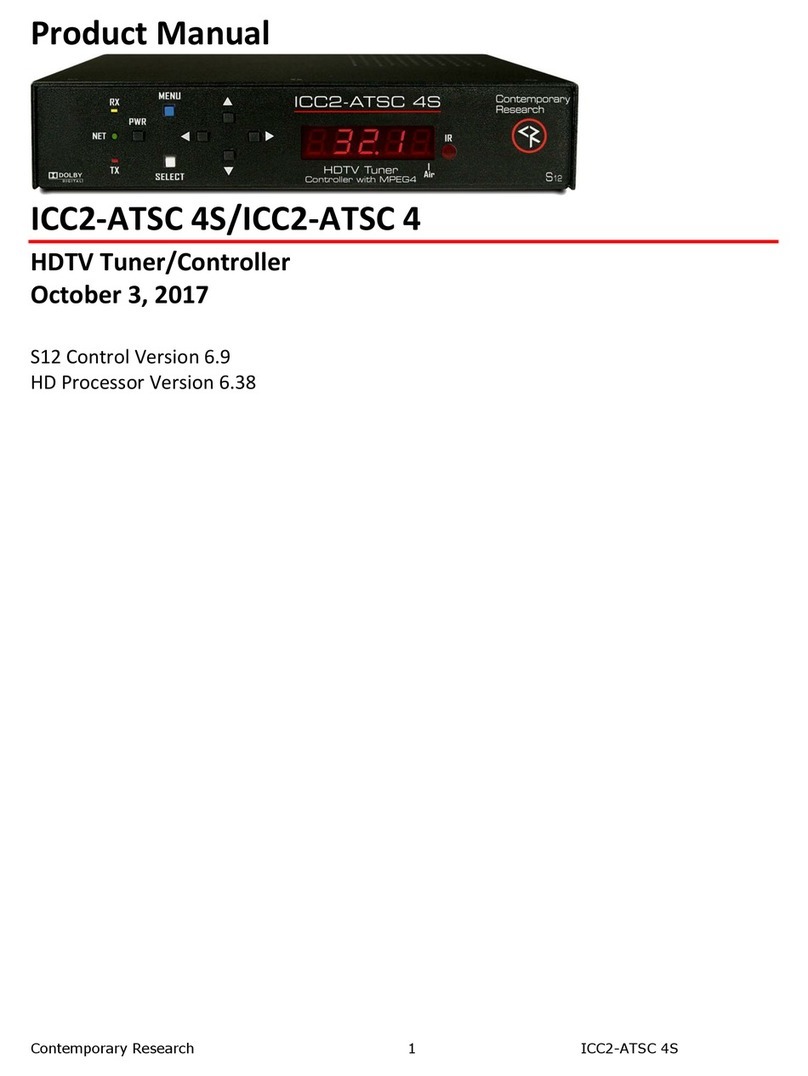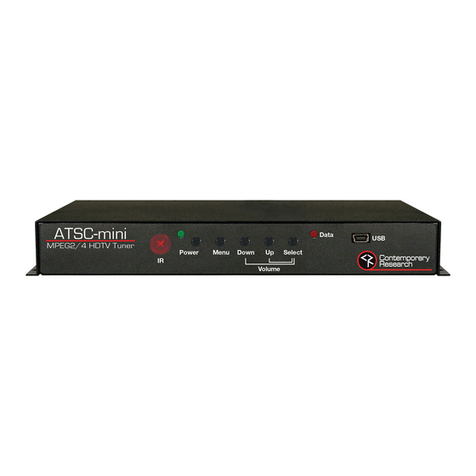
Contemporary Research 2 232-MCT Mono Caption Tuner
Table of Contents
Overview ............................................................................................................................................. 3
Specifications...................................................................................................................................... 4
Physical ................................................................................................................................................... 4
Front Panel .............................................................................................................................................. 4
Rear Panel ............................................................................................................................................... 4
Internal Character Generator/Captioning.................................................................................................... 4
RF Tuner.................................................................................................................................................. 5
Includes................................................................................................................................................... 5
Options.................................................................................................................................................... 5
Troubleshooting .................................................................................................................................. 5
Tuner Setup......................................................................................................................................... 6
Tuner Helper............................................................................................................................................ 6
Terminal .................................................................................................................................................. 7
RS-232 Control Protocol ..................................................................................................................... 8
Overview ................................................................................................................................................. 8
General protocol specifications .................................................................................................................. 8
Command String Structure ........................................................................................................................ 8
Command and Status Response ................................................................................................................ 8
RS-232 Commands ................................................................................................................................... 9
Character Generator Commands...............................................................................................................11
Keypad Channel Command ......................................................................................................................12
IC-RC Remote Emulation..........................................................................................................................12
Tune Ring Commands and Replies............................................................................................................13
Terminal Communication Commands ........................................................................................................13
RS-232 Command Hints and Tips..............................................................................................................13
Response Strings .............................................................................................................................. 14
Channel/Source Status Response String (T): .............................................................................................14
Audio Status Response String (V): ............................................................................................................14
Front Panel Mode Status Response String (S):...........................................................................................14
RS-232 Cable Connections................................................................................................................ 15
Single Tuner............................................................................................................................................15
Multiple Tuners........................................................................................................................................15
Rack Mounting .................................................................................................................................. 16
RK1 Single Unit Rack Mount .....................................................................................................................16
RK2 Side-by-Side Rack Kit ........................................................................................................................16
Safety Instructions ........................................................................................................................... 17
Limited Warranty and Disclaimer ..................................................................................................... 18


































